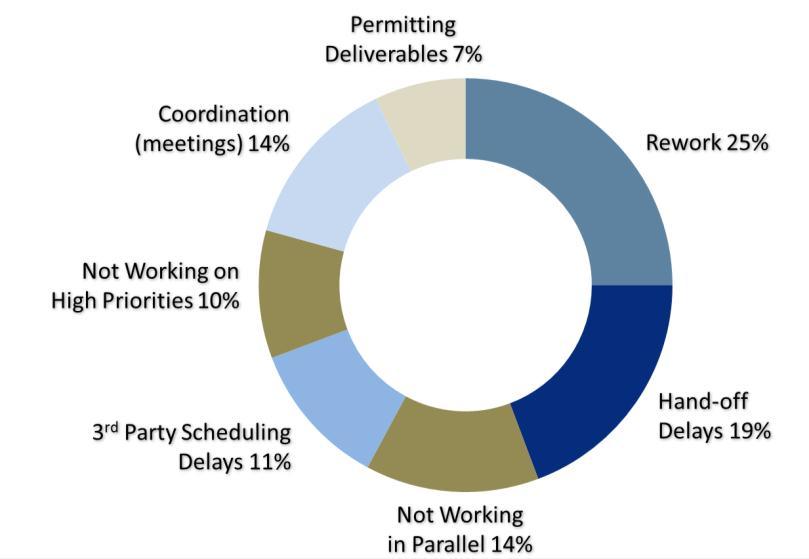
1 minute read
What do you believe are your top drilling rig utilization process problems?
Result: Ability to simulate and implement a ‘night move’ process, benchmark drilling planned vs. actual performance, and tracking down-time reasons allowed Acme to drill more wells per rig per year, and with fewer drilling rigs.
Goal: Reduce the Drilling to T ie-In process time, and decrease Work-In-Progress well inventory
Advertisement
Challenge 3 – ‘Drilling to Tie-In, Scheduling and Inventory Efficiency. ’ An audit revealed that on average, the Drilling to Tie-in process spans 110 days with an inventory of 120 wells that have been drilled, but are not yet producing. By improving transparency and scheduling, the team estimated process time span reduction to 75 days and the work-in-progress inventory to 90 wells.
Result: Ability for an asset manager to efficiently prioritize company resources using forecasted milestone dates for green field development reduced working capital by reducing work-in-progress inventory by 30 wells. In addition, accelerated revenues by 35 days
Project Summary:
The SigmaFlow Well Process Management solution manages the drilling permit process, enables efficient area-level prioritization by integrating all third party schedules (surveys, site construction, drilling, completions, and gathering), enables accurate forecasting of product ramp-up dates and volumes by linking wells with their pipelines and facilities, and provides analytics via operational and continuous improvement reports and dashboards. The project had four phases:
SigmaFlow provided jump-start templates for the concept to tie-in process, entities, milestones, schedules, reports and dashboards. Acme Energy modified this baseline by running scenarios and making tweaks to the templates to align with their business processes and requirements. Implementation was performed SBU by SBU and involved loading wells into the system and catching them up to their appropriate procedure tasks, and training SBU team members on how to best use the system and providing needed change management support. Data integration with other systems occurred once the templates and data collection had been vetted by the users.




